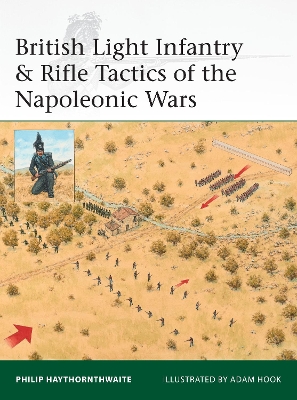Elite
5 primary works
Book 48
Despite the many celebrated victories of the British Army during the Napoleonic Wars (1799-1815), the role of the Royal Navy should never be overlooked. The 'wooden walls' formed the country's first and most important line of defence, and ranged throughout the world to protect Britain's trade-routes and in support...Read more
Despite the many celebrated victories of the British Army during the Napoleonic Wars (1799-1815), the role of the Royal Navy should never be overlooked. The 'wooden walls' formed the country's first and most important line of defence, and ranged throughout the world to protect Britain's trade-routes and in support of the land forces and overseas possessions. This book covers the huge variations in uniforms not just in the Navy but the Royal Marines and Infantry regiments which served alongside naval crews. It also looks at the organisation, training and recruitment of the force and corrects a number of misconceptions regarding impressment and training.
Book 72
If the leading player of the Napoleonic Wars was Bonaparte himself, then a cast of colourful generals ably supported him. In the first of two volumes devoted to the most influential of the first empire's military leaders, the author summarizes the career of each commander and individual characters. This...Read more
If the leading player of the Napoleonic Wars was Bonaparte himself, then a cast of colourful generals ably supported him. In the first of two volumes devoted to the most influential of the first empire's military leaders, the author summarizes the career of each commander and individual characters. This title details Napoleon's commanders. The commanders featured include Augereau, Bernadotte, Berthier, Carnot, Davout, Desaix, Junot, Kellerman, Kleber, Lannes, Lasalle, MacDonald, Massena, Moreau, Murat, Oudinot, Rapp, Serurier, Soult and Reynier. It includes quotations and anecdotes from their contemporaries bringing to life the characters of these legendary generals.
Book 164
The British Army that faced Napoleon in the Peninsula was small by continental standards, but it consistently out-fought larger French armies, never losing a major open-field action.
Book 196
During the Napoleonic Wars all the major combatants fielded large numbers of light cavalry. These nimble, fast-moving regiments performed a variety of vital roles, from reconnaissance and keeping contact with the enemy during the movement of armies, to raiding, skirmishing, and the pursuit to destruction of beaten enemies. In...Read more
During the Napoleonic Wars all the major combatants fielded large numbers of light cavalry. These nimble, fast-moving regiments performed a variety of vital roles, from reconnaissance and keeping contact with the enemy during the movement of armies, to raiding, skirmishing, and the pursuit to destruction of beaten enemies. In practice, light cavalry were often also employed for battlefield charges alongside the heavy cavalry. Featuring period illustrations and specially commissioned colour artwork, this is the second volume of a two-part study of the cavalry tactics of the armies of Napoleon and those of his allies and opponents. Written by a leading authority on the period, it draws upon drill manuals and later writings to offer a vivid assessment of how light cavalry actually fought on the Napoleonic battlefield.
Book 215
British Light Infantry & Rifle Tactics of the Napoleonic Wars
by Philip J. Haythornthwaite
Published 20 October 2016
In an age when infantry units manoeuvred and fought in rigid blocks, the idea of encouraging initiative and allowing a unit to 'skirmish' was regarded as revolutionary and fell out of favour in the years following the French-Indian and American Revolutionary wars. It was revived by far-sighted British and...Read more
In an age when infantry units manoeuvred and fought in rigid blocks, the idea of encouraging initiative and allowing a unit to 'skirmish' was regarded as revolutionary and fell out of favour in the years following the French-Indian and American Revolutionary wars. It was revived by far-sighted British and foreign-mercenary officers, who observed the way in which French Revolutionary armies deployed skirmishers to prepare the way for their assault columns.
Offering a detailed analysis of the tactics, this book is studded with period 'battle descriptions' quoted from eye-witness accounts, creating a comprehensive guide to the Light and Rifles units of Wellington's Light Division. As the result of the first tentative experiments in skirmishing the units achieved an unsurpassed peak of efficiency - they marched faster, were versatile in any sort of tactical situation and could shoot more accurately than either friend or foe. No other national army, either allied or enemy, achieved these standards.
Offering a detailed analysis of the tactics, this book is studded with period 'battle descriptions' quoted from eye-witness accounts, creating a comprehensive guide to the Light and Rifles units of Wellington's Light Division. As the result of the first tentative experiments in skirmishing the units achieved an unsurpassed peak of efficiency - they marched faster, were versatile in any sort of tactical situation and could shoot more accurately than either friend or foe. No other national army, either allied or enemy, achieved these standards.




